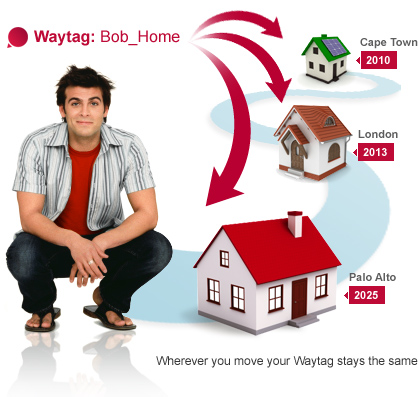In a move that signals a major leap forward in generative AI, OpenAI has quietly rolled out ChatGPT-5, its most advanced model to date….
Waytag: A startup changing the way we use location services
A new South African start-up, Waytag, is setting out with the ambitious goal of revolutionising the way we think about and use addresses. Location-based services are clearly a strong feature in most fast-growing web services and applications, such as FourSquare, GoWalla and Twitter. It can however sometimes seem like these types of applications exist in a world of their own, catering to just a small niche of web-savvy people.
Waytag may just change all this by improving the usability of physical location addresses from the bottom up.
The concept is simple, as most clever concepts are. Take the domain name of most websites: It’s easy to remember a string of normal characters which you can type into any web browser and get to the site you want. Behind that simple name of course lies a far more complex IP address system.

Waytag applies the same concept to geo-location coordinates –- assigning a user a chosen, unique ‘Waytag’ to a specific geo-coordinate. For many applications this might eradicate the need for what Waytag CEO Warren Venter calls the “Cave Address System” –- house numbers, street names, suburbs and so on.
In many ways this is all about usability and user experience. How usable are the conventional types of addresses we use today? What is the experience for the user, given the huge trend towards integration between our everyday lives, and all-permeating web-based technologies?
As with many great solutions, the key was identifying the right question to ask. Most of us may not have ever considered questioning the usability and efficiency of street addresses –- they are just part of the background of our lives, part of the environment.
Yet there are these fairly large pockets of user frustration that occur at all levels as a result of the “Cave Address System”.
User Frustration Example 1
I order Pizza from a restaurant, say Butlers in Cape Town. Butlers looks up my address on Google Maps and it has my street address written incorrectly, so they end up going to another street with the same name just down the road. User Experience: Cold Pizza. True Story.
User Frustration Example 2
Your car breaks down on the N2 freeway. You call the AA, but never having been too hot with your sense of location and landmarks, your best effort is to direct them to the 77km stretch of motorway between Somerset West and Hermanus in the Western Cape of South Africa. Exaggeration, but we all know someone for whom this scenario is not too far off.
User Frustration Example 3
You order goods online: Delivery estimate 3 – 5 working days. You can’t say right now whether you will be at a meeting in Johannesburg, at the office in Cape Town, or working from home on any one of those three days. User experience: Long winded conversations with call centre staff who have to liaise with the delivery driver who is trying to interact with a GPS giving multiple options for the addresses typed in. Mission.
Of course these are very specific examples concerning private individuals. There is a potential goldmine of wealth in this system for businesses to exploit. Supermarket chain Woolworths are early adopters of the Waytag system, registering every one of their stores with the system. Their hope is to improve the efficiency and user experience of their online shopping business. By using the Waytag system Woolworths intends to improve delivery accuracy and reduce their carbon footprint in the process.
The ways in which the average user will interact with the Waytag system is not yet completely determined. Waytag themselves have developed a web-based interface and a very slick iPhone app to go with it, but these could well be just the first examples of how the system will be utilised.
The long-term view of the business –- dependent upon large levels of adoption -– is to realise the value in the backend of the system, and the powerful database of physical locations that it will have built up. Whilst no exact revenue model has been decided upon, Waytag plan to make money by way of external application development and systems integration. If Waytags become as ubiquitous as email addresses and phone numbers, then there will be plenty of business opportunities that arise.
With Waytag already making inroads into their native South African market as a proving ground, the doors are wide open for South African entrepreneurs to start formulating scalable concepts. The great beauty of businesses that innovate on such a fundamental level (think Google or Apple) is in the new markets they create, and the innovation they inspire in others. Given some time and a bit of luck, Waytag might be ensuring us quick and easy location services — and hot pizza forever more.
